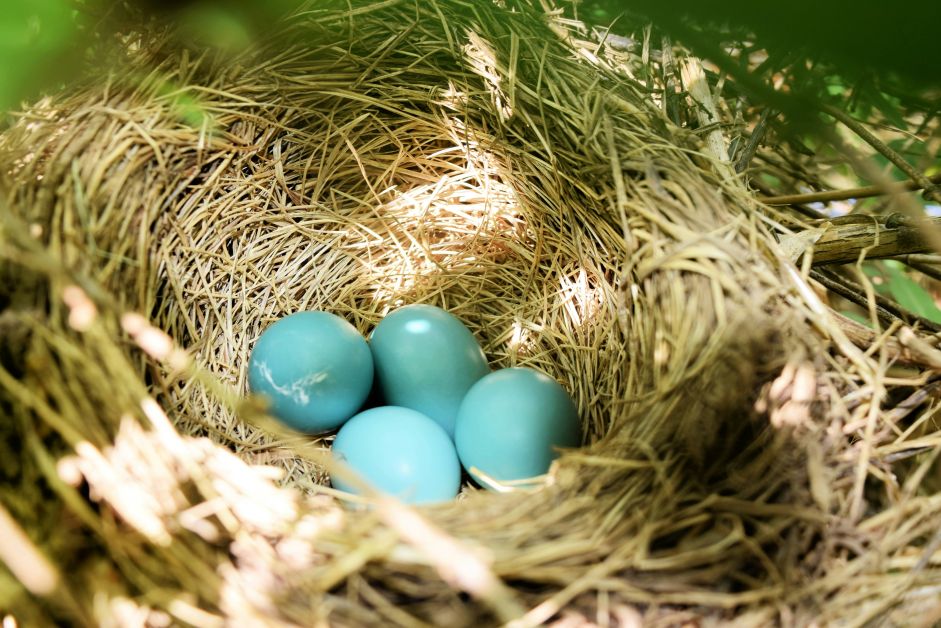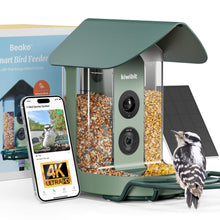Why Bird Eggs Come in So Many Colors: Two Pigments, Many Pressures

Have you ever seen bird eggs with different colors? At first glance egg colors look random. In fact most hues and patterns can be traced to two natural pigments and a handful of ecological pressures. This guide explains the chemistry, the main drivers behind color and speckles, and the common exceptions you will meet in the field.
The Two Pigments
Biliverdin produces blue to blue-green tones. Protoporphyrin produces browns and reddish browns and often forms speckles.
Both pigments are deposited in the shell gland shortly before laying. Different concentrations, layering, and spatial patterns create everything from pure white to turquoise to heavily mottled eggs.
Camouflage and Predation Risk
Open cup and ground nests are easy for predators to spot. Their eggs tend to be sandy or gray-brown with irregular speckles that break up outlines and match the nest substrate. Think of plovers and sandpipers on open ground, and many open-cup songbirds.
Cavity and nest-box species are safer in dark spaces. Their eggs are often plain white or very pale. White is also easier for parents to see and arrange in dim light. Typical examples include owls, swallows, and titmice or chickadees. Some cavity nesters keep a white base with fine brown flecks, a transitional pattern that still fits low-light conditions.

Climate, Light, and Heat Management
Color also responds to temperature and sunlight.
- In hot, bright sites lighter shells reflect more solar energy and heat up less.
- In cold early-season conditions darker shells absorb heat faster, which can help embryos warm up between incubation bouts.
- The blue-green pigment biliverdin has been suggested to offer some protection against ultraviolet and oxidative stress. Evidence for these effects is mixed and depends strongly on shading, nest materials, and parental incubation behavior.
These are trends rather than rules.
Shell Strength and “Reinforcement” Speckles
Protoporphyrin speckles often concentrate where shells are thinner or where calcium is limited. Several studies in passerines report a correlation between brown speckling and mechanical stress zones, consistent with a low-cost reinforcement strategy. This is a leading functional hypothesis, not a universal law, and speckles can serve multiple roles at once.
Microbes and Oxidative Pressure
Eggshells host microbes and face oxidative challenge from heat and light. Biliverdin is an antioxidant, so blue-green eggs may gain small advantages in sunny or microbe-rich settings. Results vary by species and habitat, so this factor is best treated as secondary but plausible.
Species Identity and Brood Parasitism
In systems with brood parasites such as cuckoos, hosts evolve more distinctive colors and spot patterns that act like signatures. Parasites evolve close mimicry of the host egg appearance. This arms race can lead to strikingly consistent colors within host populations and very accurate copies by the parasite.
Signaling to Mates: A Debated Idea
Some studies propose that brighter blue-green eggs signal good maternal condition and nudge partners to invest more in care. Findings are mixed across species and study designs, so treat this as a context-dependent hypothesis rather than a general rule.
One-Sentence Summary
Egg color is a multi-factor compromise. Nest type and predation risk are usually the strongest drivers, climate and light come next, and shell mechanics, microbes, brood parasitism, and social signals add layers of variation. Clear patterns exist, yet many exceptions remain because incubation style, nest materials, background colors, behavior, and evolutionary history all shape the outcome together.
FAQ
Why are many cavity nesters’ eggs white? Dim interiors lower visual exposure to predators. White eggs are easy for parents to locate and arrange in the dark.
Is blue-green the “best” color? No single color is best. Advantages depend on background, sun exposure, temperature, and parental behavior. Blue-green can help in some contexts but not all.
Do speckles always reinforce the shell? No. Speckles can contribute to camouflage, identity, and signaling. Mechanical reinforcement is supported in several songbirds but is not universal.
Why do eggs of one species vary by region? Predators, substrate color, temperature, humidity, calcium availability, and parasitism pressure differ among sites. Local selection can shift color and pattern.
Are human-made nest boxes changing egg color? Boxes reduce exposure and light, which favors pale eggs in many lineages already adapted to cavities. Large evolutionary shifts take time; short-term changes are more likely in behavior than in pigment deposition.



